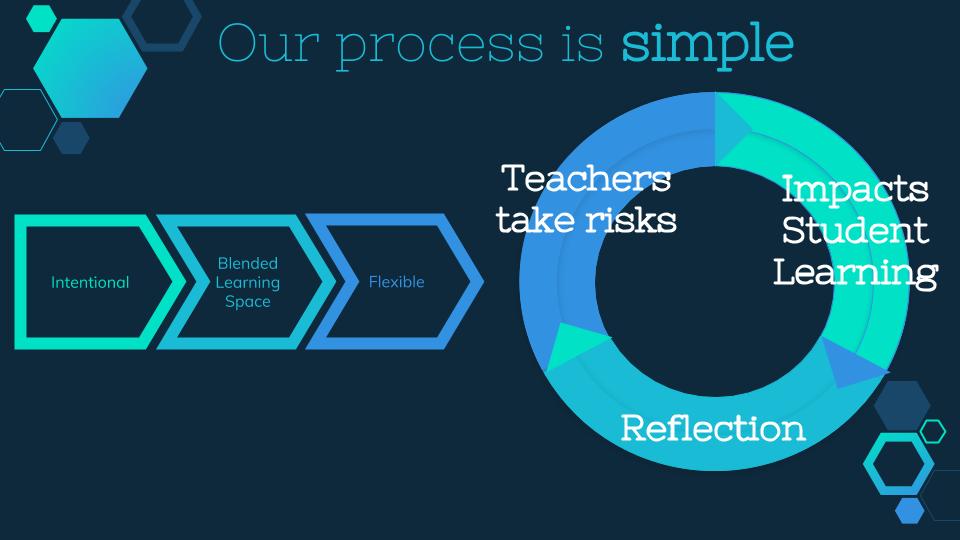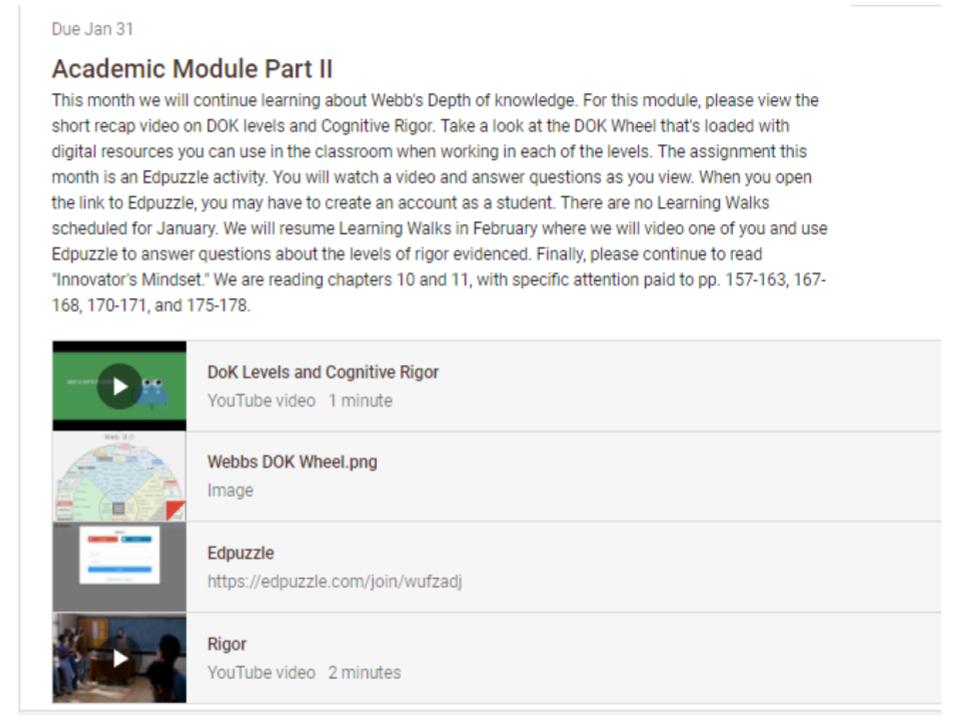Two short years ago, I sat in my high school Media Coordinator’s interactive space to learn all about the power of Twitter, one of her many “Technology Tuesday” opportunities that she hosted as floating events to weave technology into our staff’s everyday teaching methods. Not only did she share a variety of instructional strategies with me, she shared how the NCDLCN experience had transformed her as an educator and encouraged me to participate the subsequent year.
A short blog post will never provide justice to impact that NCDLCN has had on me. During my year as a participant, I worked with an incredible mentor whose wisdom and experience was invaluable as I stepped out of my classroom into a lead teacher position. My assistant principal, who oversaw my department and served as my liaison for my NCDLCN project, aligned me with opportunities at both the building and district level to lead PLCs, lead professional development in technology, and develop blended professional development in a variety of areas.
In each NCDLCN event, I gained content knowledge, curated resources, and expanded my network of educational professionals who served as critical collaborators, ready to offer their expertise and input on any idea. Through this, my vision for what building level professional development could look like came to life. Armed with a #sketchnote and an example, I pitched my idea to our leadership team. From there, magic happened. In a true collaborative effort, our building leadership revealed a year-long professional development program that targeted academic rigor immersing teachers in a continuous improvement cycle.

Prior to NCDLCN, professional development in my building was delivered in a stagnant, sit-and-get method. NCDLCN encourage us to creatively turn PD upside down. Our goal was simple: Innovative Building Transformation through Shared Leadership. Our three-phase approach highlighted innovative, academically rigorous, heavily differentiated practices by incredible teachers in our building. In each phase (divided by level of academic rigor), our leadership team modeled the use of technology in their instructional methods, allowing teachers to experience the technology through the lens of a student and learn an instructional technique for blended learning.

In addition, teachers participated in Learning Walks, opening the door for the sharing of ideas across grade levels and subject areas. As we advanced our capacities in technology, our Learning Walks evolved so that they, too, were delivered in a digital format.To celebrate the risks that our teachers embraced, they were awarded Badges that were proudly showcased on posters beside their doors, email taglines, and social media. In a true learner-centered model, we asked for teachers to jump in where they felt the most comfortable – aiming for 25% participation in our first year. We understood that each teacher is different – with different time available to learn more about digital technologies, different comfort level with technology, different interest levels, and different needs for support. By allowing teachers to move at their own pace, we established a system that allowed for tailored, individual support for each teacher.
What makes our year-long professional development plan innovated? Our plan is:
- Aligned with our school improvement plan and revisited often through teacher professional development growth progress monitoring charts
- Intentionally embedded in consistent professional learning that targets rigorous instruction, best practices, and student engagement.
- Modeled by our leadership team (pedagogy and use of digital tools)
- Accessible and attainable.
- Tiered, with expected participation at the Novice Level and encouraged participation at the Apprentice and Practitioner levels.
- Celebrated in print, email, and social media.
To date, 272 badges have been awarded that span from engaging in professional chatter on Twitter to creating infographics with their students. 95% of the teachers in our building have earned 7 of the 8 available badges – a statistical success that we did not expect in August. The most impressive result has been how the teachers have embraced technology tools to creatively and innovatively transform an area (or multiple areas) of their practice.
This entire building initiative started at an NCDLCN January brainstorming session with my building leader. Over time, this project evolved into where it is today – with many voices contributing to its path. While I am proud of our current product, I am more proud of the growth that took place along the journey. NCDLCN’s Professional Development days provided me with rich educational content, instructional delivery methodology, and opportunities to collaborate with passionate educators. Each moment provided insight – an idea, a tweak, or a spark – that improved this initiative in some way. While our effort was to instill a continuous improvement cycle with our classroom teachers, this focus on reflection started with NCDLCN.
NCDLCN has empowered me to take risks, use my voice, and dream big. My vision started as a penciled sketchnote and evolved in 272 issued badges in a small school. While the original sketch is long gone, the vision is not. More important than a vision is the journey to bring that vision to fruition. I am excited about the new relationships, opportunities for collaboration, deep reflection, and continued growth that the next leg of my journey affords. Above all, NCDLCN taught me that the growth is in the journey.
Resource: NCDLCN: PD in your PJs

